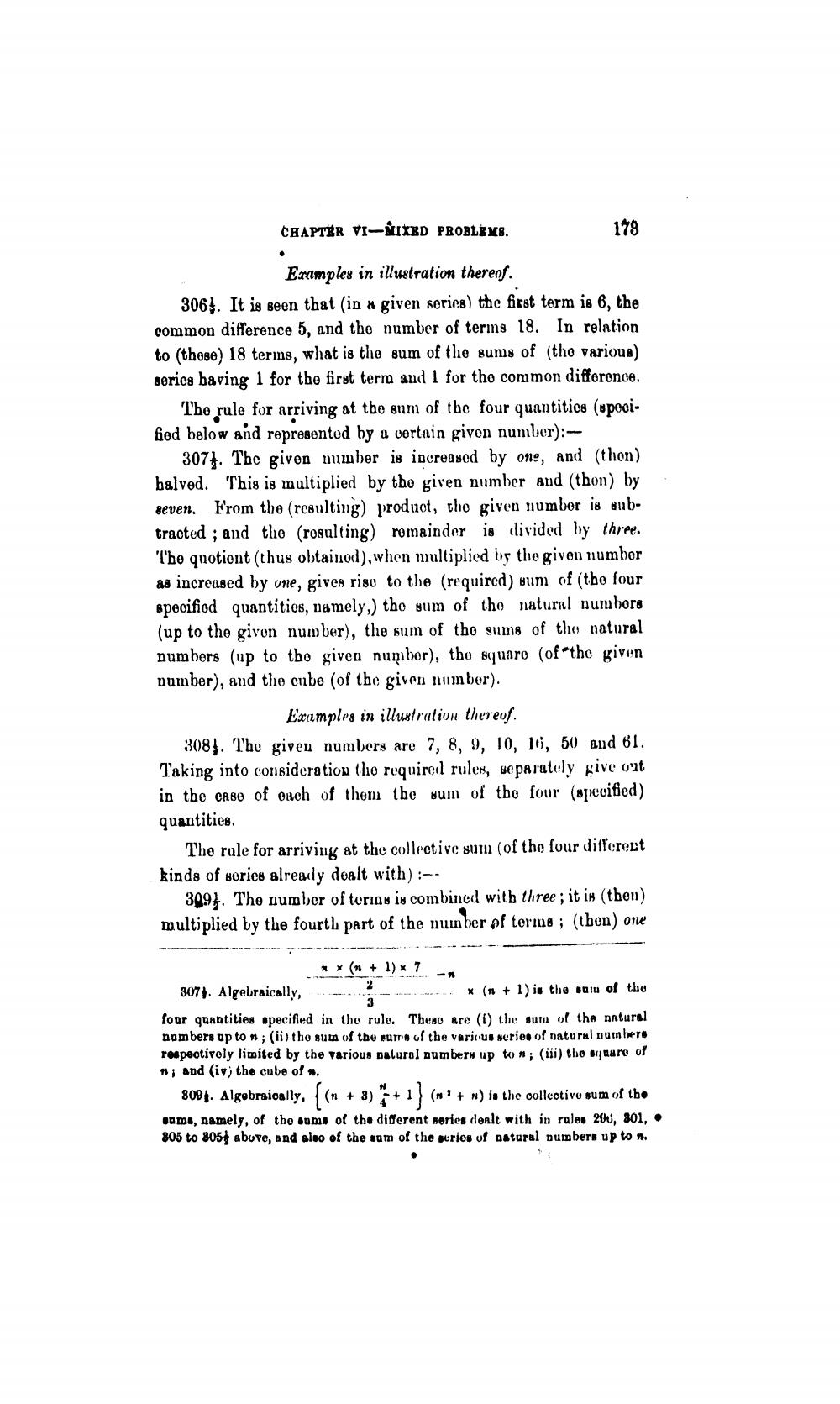________________
CHAPTER VI-MIXED PROBLEMS.
Examples in illustration thereof.
306. It is seen that (in a given series) the first term is 6, the common difference 5, and the number of terms 18. In relation to (these) 18 terms, what is the sum of the sums of (the various) series having 1 for the first term and 1 for the common difference.
178
The rule for arriving at the sum of the four quantities (specified below and represented by a certain given number):
307. The given number is increased by one, and (then) halved. This is multiplied by the given number and (thon) by seven. From the (resulting) product, the given number is subtracted; and the (rosulting) remainder is divided by three. The quotient (thus obtained), when multiplied by the given number as increased by one, gives rise to the (required) sum of (the four specified quantitios, namely,) the sum of the natural numbers (up to the given number), the sum of the sums of the natural numbers (up to the given number), the square (of the given number), and the cube (of the given number).
Examples in illustration thereof.
308. The given numbers are 7, 8, 9, 10, 16, 50 and 61. Taking into consideration the required rules, separately give out in the case of each of them the sum of the four (specified) quantities.
The rule for arriving at the collective sum (of the four different kinds of series already dealt with) :--
309. The number of terms is combined with three; it is (then) multiplied by the fourth part of the number of terms; (then) one
*x (n + 1) x 7
2
307. Algebraically, x (n + 1) is the sum of the four quantities specified in the rule. These are (i) the sum of the natural numbers up to n; (ii) the sum of the sums of the various series of natural numbers respectively limited by the various natural numbers up to n; (iii) the square of n; and (iv) the cube of n.
809. Algebraically, {(n +3)+1(+) in the collective sum of the
sums, namely, of the sums of the different series dealt with in rules 20, 801, 805 to 805 above, and also of the sum of the series of natural numbers up to n.
•




